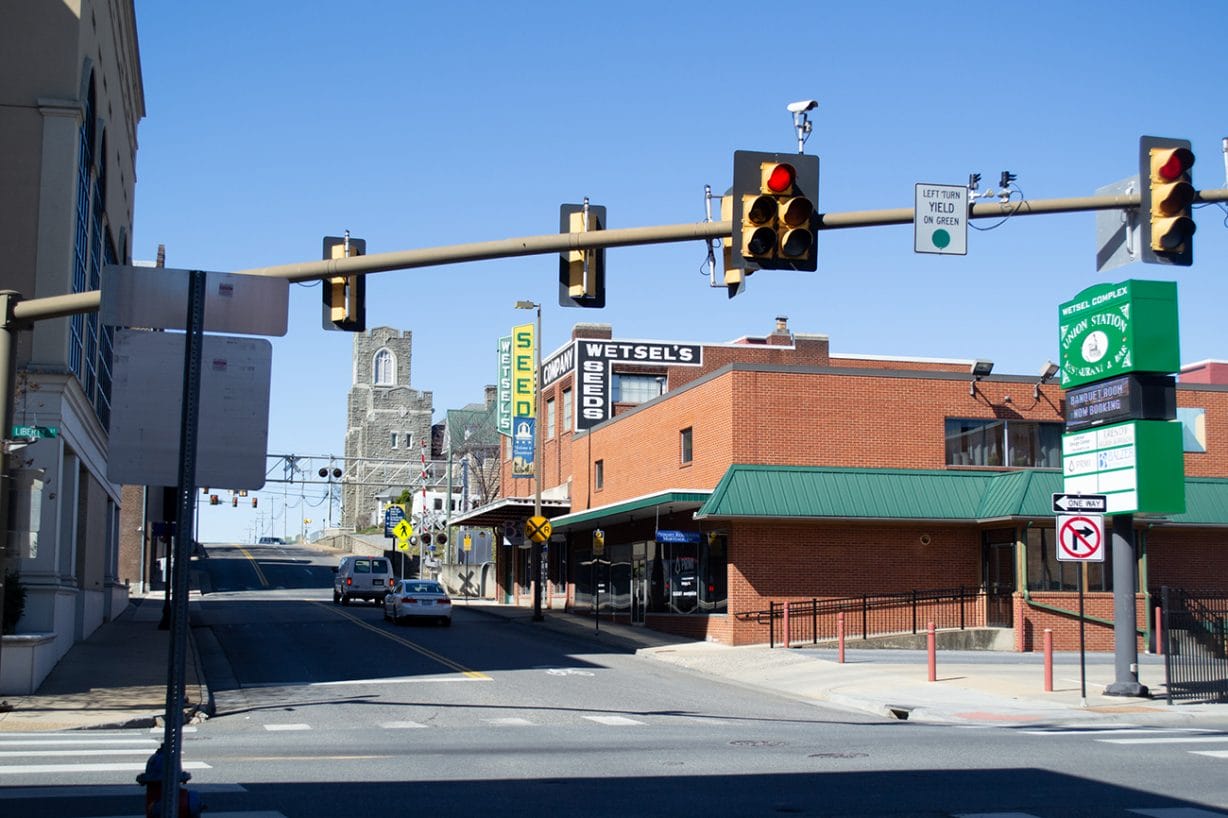
By Jessica Kronzer, contributor
Harrisonburg community members can inspire a new vision for downtown to help shape its next 20 years, such as what to do with the lots where the two downtown parking decks stand.
Harrisonburg Downtown 2040, a partnership between the city of Harrisonburg and Harrisonburg Downtown Renaissance, is collecting community input over the next several months to create a long-term plan for growth downtown. The initiative will shift from collecting surveys to creating concrete plans starting this summer. And the committee in charge of the project plans to unveil a final proposal to the city council this fall.
Community members can contribute their opinion by marking important areas, ideas, or problems on a virtual map of downtown. Local breweries and restaurants distributed “take-out menus” where community members can “place their order” for the future of downtown; an identical survey was posted online in English and in Spanish.
“Downtown is kind of the community’s living room,” said Andrea Dono, executive director of Harrisonburg Downtown Renaissance. “We want people to feel like they have a say. It’s really important that we have a community-driven vision.”
The downtown renaissance group has advocated for a “roadmap for downtown’s future” for years. Dono said people visit downtown to come together to make statements, to protest or to celebrate moments like graduation or marriage.
The city and HDR assembled a committee with 27 stakeholders. The group will meet about once a month for the next six or seven months. Some of the committee members include JMU professors and administrators, local business owners, residents and a pastor.
“We don’t want just a handful of people dictating all those decisions; it really does need to be a community’s decision,” said Brian Shull, the city’s economic development director and the Harrisonburg Downtown 2040’s project manager. “Downtown is such an important component for this whole city and county region, so we want to make sure people take ownership in that.”
Focus groups and interviews will help the city determine what to preserve and what to change downtown. The initiative’s planners will continually roll out options for people to contribute their opinions through early summer.
Nineteen firms responded to Harrisonburg’s request for a consulting team and Philadelphia-based Interface Studio was unanimously selected to help execute the project’s goals. Shull said the committee was attracted to the firm’s creativity and “hands on” approach to past projects. Interface Studio, which specializes in “city planning” and “urban design,” has worked with other college towns.
While the state mandates that Harrisonburg creates a citywide plan every five years, this is the first time that Harrisonburg has created a “deep dive study of just downtown,” Shull said.
Shull said the measure was largely initiated because of efforts by the city manager, Eric Campbell.
“We’ve had a lot of development over the last 10 years,” Shull said. “If we want to make sure we maximize our opportunities, let’s make sure we have a strong game plan that we can follow moving forward.”
Among the aspects Harrisonburg Downtown 2040 will examine are the two parking decks that are owned and operated by the city — the Water Street and Elizabeth Street decks. Shull said the parking decks are “close to the end of their useful life,” so the recommendations could include tearing them down to build mixed-use developments that incorporate parking — or the lots could be repurposed as housing, retail or office space.
The city is looking at incorporating environmentally friendly plans. A potential plan that has been considered for years, Shull said, is building a park downtown.
Public opinion can help the city to select an ideal location for a park. Shull said that Harrisonburg’s public works, public utilities, and electric commission are all looking at incorporating green initiatives.
The decision to focus on downtown, rather than other parts of the city, came about because of its historic character. Dono likened downtown to Harrisonburg’s biggest billboard.
“People go to other parts of town to run errands,” she said. “But I think they come downtown to make memories.”
Some challenges Dono noted include “parking, destination marketing, attracting tourists, [and] leveraging the economic assets that we have in a very concentrated area.”
Preserving historic areas of downtown is one priority that members of the public have already made clear, Dono said. Beyond history, residents also can provide examples of what aspects of Harrisonburg they want to see maintained.
Dono said that downtown has development opportunities; for example, buildings could be built up instead of out for “sustainable growth.” Even though the downtown footprint is relatively small, it has lots of businesses and has potential for additions and investments, she said.
“We’re not going to become Charlottesville. We just need to be the best Harrisonburg we can be,” Dono said. “Our identity is really important throughout all of this.”
Journalism is changing, and that’s why The Citizen is here. We’re independent. We’re local. We pay our contributors, and the money you give goes directly to the reporting. No overhead. No printing costs. Just facts, stories and context. We’re also a proud member of the Virginia Press Association. Thanks for your support.

